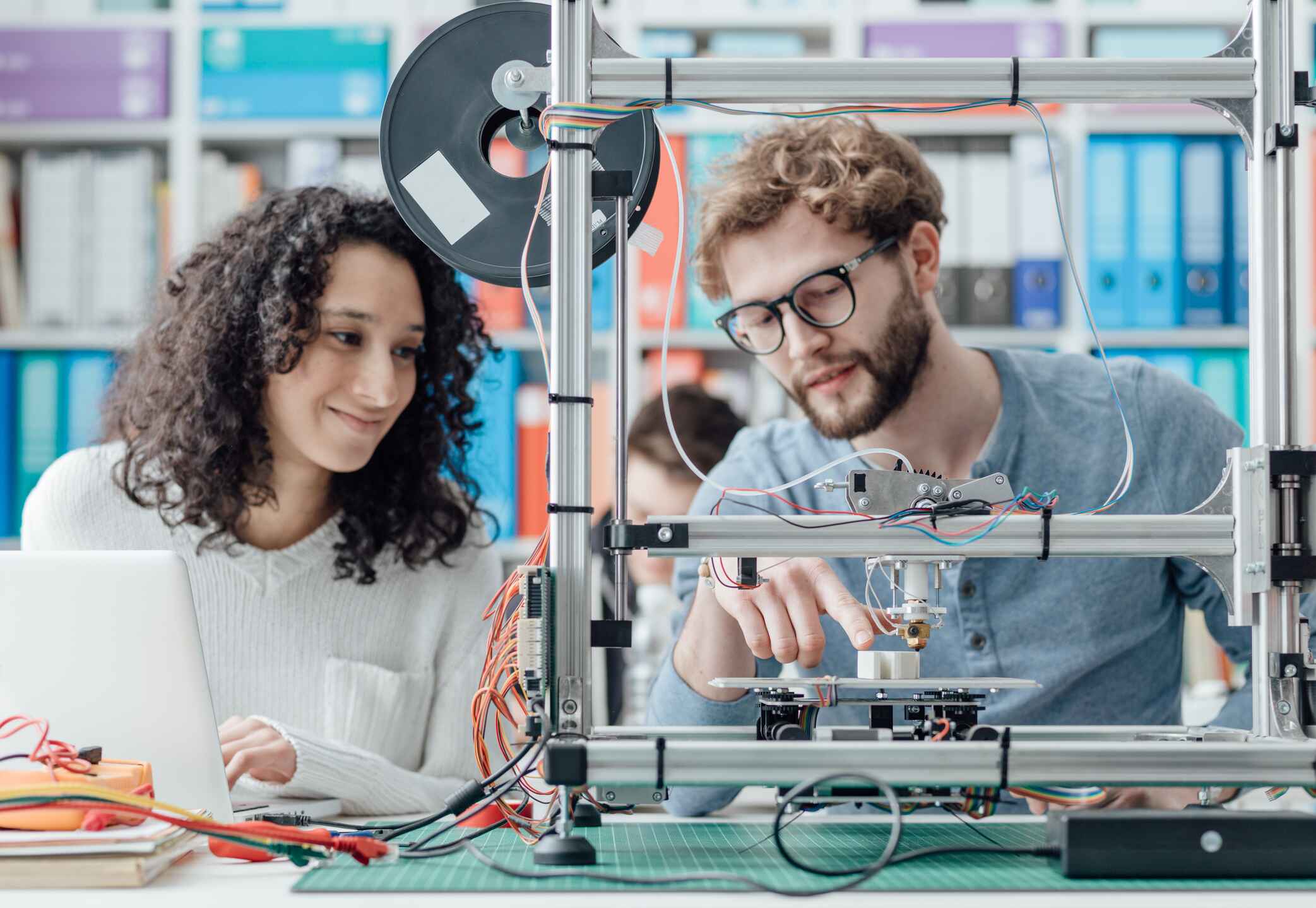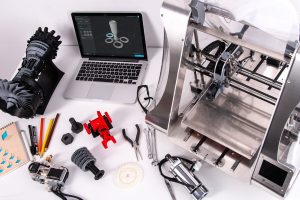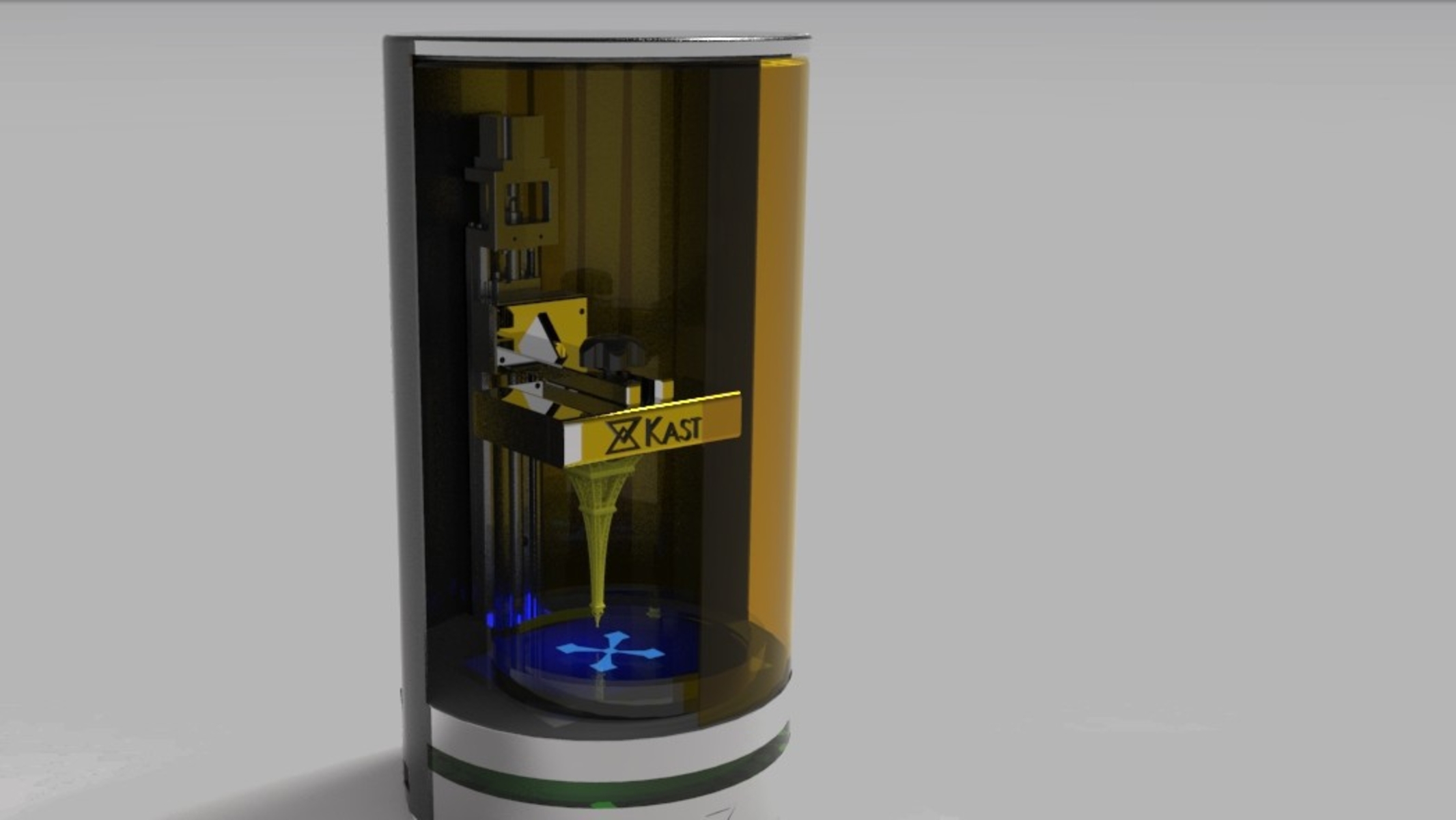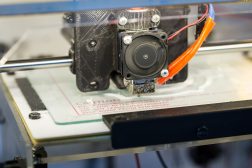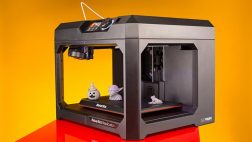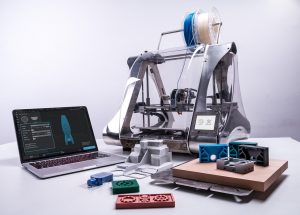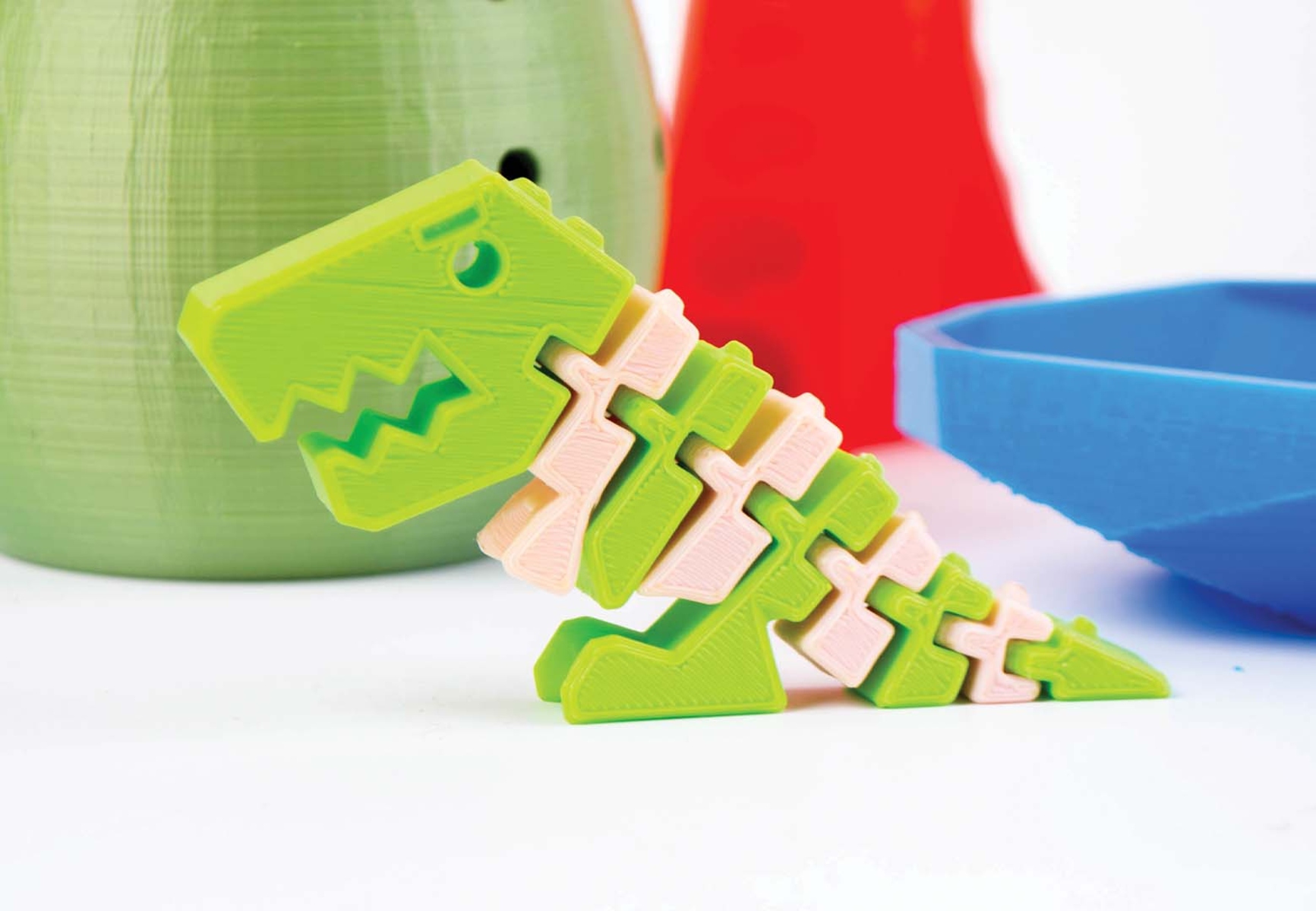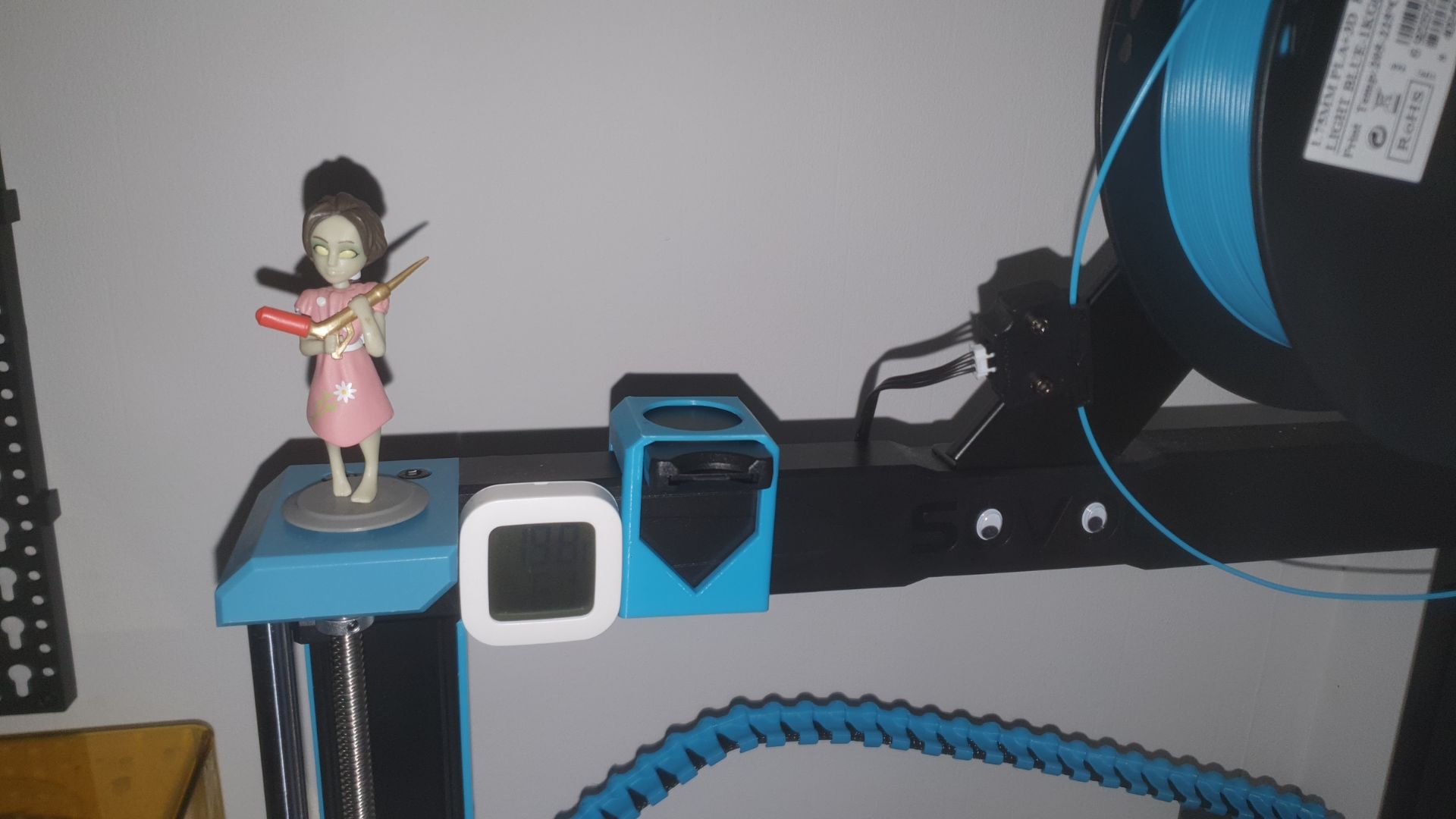The Importance of Science Knowledge for 3D Printer Technicians
When it comes to the field of 3D printing, technicians play a crucial role in ensuring the successful creation of intricate and precise objects. While their expertise in operating and maintaining 3D printers is vital, a solid understanding of science is equally essential. Science knowledge not only provides technicians with a deeper comprehension of the technology and materials involved but also enables them to overcome challenges and achieve optimal results. In this article, we will explore why science knowledge is important for 3D printer technicians.
One of the primary reasons why science knowledge is crucial for 3D printer technicians is the need to understand materials and their properties. Different materials require specific printing techniques and parameters to achieve the desired outcome. Technicians with a strong background in science can accurately select the appropriate materials for a particular project and understand how their properties may impact the printing process. This knowledge allows them to make informed decisions and maximize the quality and functionality of printed objects.
Additionally, science knowledge empowers technicians to develop new printing techniques. By understanding the principles of chemistry, physics, and engineering, technicians can experiment with different variables such as temperature, speed, and layer thickness. This experimentation can lead to the discovery of innovative ways to improve printing accuracy, reduce materials waste, and enhance the overall efficiency of the process.
Troubleshooting and problem-solving are integral aspects of a 3D printer technician’s role. Having a solid foundation in science enables technicians to analyze and address issues that may arise during the printing process. Whether it’s a clogged nozzle, inconsistent extrusion, or adhesion problems, technicians with science knowledge can utilize their understanding of physics and chemistry to diagnose the root cause and implement effective solutions.
Another area where science knowledge is invaluable for 3D printer technicians is testing and quality control. Technicians need to verify that the printed objects meet the required specifications and standards. By conducting various tests and measurements, such as tensile strength, surface roughness, and dimensional accuracy, technicians can ensure the quality and reliability of the final product. Science knowledge allows them to interpret and analyze the test results, make adjustments if necessary, and provide valuable feedback to engineers and designers.
Safety is of utmost importance when working with 3D printers. Understanding the science behind the technology and the materials used enables technicians to identify potential hazards and take appropriate precautions. They can assess the risks associated with specific materials, ensure proper ventilation, and handle hazardous substances safely. By incorporating scientific principles into their approach, technicians can create a safer working environment and minimize the chances of accidents or injuries.
In addition to science knowledge, 3D printer technicians need to be proficient in Computer-Aided Design (CAD) software. Understanding the underlying science principles gives technicians an edge in effectively utilizing CAD software to design and modify 3D models. This allows them to optimize designs for better printability, troubleshoot any design-related issues, and collaborate more effectively with engineers and designers.
Collaboration is another area where science knowledge becomes essential for 3D printer technicians. Engineers and designers rely on technicians to translate their ideas and designs into tangible objects. By having a solid understanding of science, technicians can communicate more effectively and provide valuable input during the design process. They can suggest alternative materials, propose modifications to improve functionality or durability, and ensure that the final product meets the desired specifications.
Overall, science knowledge is integral to the success of 3D printer technicians. It allows them to master the intricacies of materials, develop new printing techniques, troubleshoot issues, ensure quality control, prioritize safety, utilize CAD software effectively, and collaborate seamlessly with engineers and designers. By continuously expanding and refining their science knowledge, technicians can stay at the forefront of this rapidly evolving field and contribute to the advancement of 3D printing technology.
Understanding Materials and Their Properties
One of the fundamental aspects of being a 3D printer technician is having a deep understanding of various materials and their properties. This knowledge is vital for selecting the right materials for specific projects and ensuring successful and accurate prints. To truly excel in the field of 3D printing, technicians must be familiar with the characteristics, behavior, and limitations of different materials. In this section, we will explore the importance of understanding materials and their properties for 3D printer technicians.
First and foremost, understanding materials and their properties allows technicians to make informed decisions when selecting the appropriate material for a particular printing project. Different materials have distinct properties that can significantly impact the printing process and the properties of the final object. Variables such as strength, flexibility, heat resistance, and transparency all come into play when determining the suitability of a material. By having a solid knowledge of materials, technicians can choose the most suitable material for a specific application, ensuring the desired functionality and durability of the printed object.
Moreover, understanding the properties of materials enables technicians to optimize the printing parameters and achieve the desired print quality. Each material has its own set of characteristics that influence the optimal temperature, print speed, cooling rate, and layer thickness. Technicians who are well-versed in materials science can fine-tune these parameters to achieve the best possible results. This includes minimizing issues like warping, stringing, or poor adhesion, which are often related to improper material handling or incorrect printing settings.
Another crucial aspect of understanding materials and their properties is anticipating potential challenges and limitations. Different materials exhibit unique behaviors during the printing process. Some materials, like certain types of plastics, may be prone to shrinking or warping if not properly accounted for during the printing process. Other materials, such as metals or ceramics, may require additional steps like post-processing or sintering to achieve the desired properties. Technicians who possess comprehensive knowledge of materials can proactively address these challenges and implement appropriate strategies to overcome them.
Furthermore, understanding materials and their properties empowers technicians to provide valuable insights and recommendations to engineers and designers. By collaborating closely with the design team, technicians can leverage their material expertise to help optimize designs for better printability and functionality. For instance, they can suggest changes in wall thickness or geometry to avoid issues like overhangs or excessive supports. They can also propose alternative materials that may offer better performance or cost-effectiveness for a specific application. This collaboration ensures that the final product not only meets the design requirements but also takes advantage of the unique capabilities of different materials.
Overall, having a deep understanding of materials and their properties is crucial for 3D printer technicians. From selecting the right materials, optimizing print parameters, anticipating challenges, to providing valuable input during the design process, materials knowledge forms the foundation of successful 3D printing. By constantly expanding their knowledge in this area and staying updated with emerging materials and technologies, technicians can deliver exceptional results and contribute to the advancement of the field.
Developing New Printing Techniques
As 3D printing continues to evolve and expand its applications, it becomes increasingly important for 3D printer technicians to stay at the forefront of technological advancements. One of the key areas where their expertise is crucial is in the development of new printing techniques. By exploring innovative methods and pushing the boundaries of what is possible, technicians play a vital role in driving the advancement of 3D printing technology. In this section, we will delve into the significance of developing new printing techniques for 3D printer technicians.
Having a strong foundation in science and engineering principles allows technicians to experiment with various variables and parameters to develop new printing techniques. The understanding of concepts such as material behavior, heat transfer, and fluid dynamics provides them with the knowledge needed to explore uncharted territories. By investigating different combinations of temperature, print speed, layer height, and other factors, technicians can discover groundbreaking methods that enhance printing accuracy, efficiency, and sustainability.
Moreover, developing new printing techniques gives technicians a competitive edge in the industry. By staying innovative and continuously improving their skills, they can differentiate themselves from others in the field. This opens up possibilities for career advancements and the opportunity to work on cutting-edge projects that require specialized printing techniques.
Developing new printing techniques also benefits the larger 3D printing community. By sharing their discoveries and insights with fellow technicians, engineers, and designers, technicians contribute to the collective growth of the industry. This collaboration fosters a culture of innovation and drives the development of new applications across various sectors, including healthcare, aerospace, architecture, and more.
Furthermore, the development of new printing techniques can solve specific challenges faced in the industry. As 3D printers become more sophisticated and capable of printing complex and intricate objects, technicians need to adapt and find solutions to potential limitations. Whether it involves improving support structures, enhancing layer adhesion, or increasing print speed without compromising quality, technicians with a knack for developing new techniques can overcome these hurdles and drive the technology forward.
In addition, the development of new printing techniques can lead to advancements in material utilization and waste reduction. By optimizing printing parameters and exploring alternative materials, technicians can find more efficient and sustainable ways of producing objects. For instance, by experimenting with infill patterns and density, they can reduce the amount of material used, resulting in cost savings and a more environmentally friendly approach.
By constantly striving to develop new printing techniques, technicians not only position themselves as innovators and leaders in the field but also contribute to the overall advancement of 3D printing technology. Their dedication to pushing the boundaries, finding solutions to challenges, and driving sustainability leads to improved printing processes, expanded possibilities, and more accessible and affordable 3D printing solutions for a wide range of applications.
Troubleshooting and Problem Solving
One of the critical skills that every 3D printer technician must possess is the ability to troubleshoot and solve problems that may arise during the printing process. As with any complex technology, 3D printers can encounter various issues that require quick thinking, technical knowledge, and problem-solving abilities to resolve. In this section, we will explore the significance of troubleshooting and problem-solving skills for 3D printer technicians.
First and foremost, troubleshooting skills allow technicians to analyze and diagnose problems effectively. When faced with an issue such as a clogged nozzle, inconsistent extrusion, or adhesion problems, technicians with strong problem-solving abilities can utilize their knowledge of the printing process and the underlying science to pinpoint the root cause of the problem. This accurate diagnosis lays the foundation for implementing the appropriate solution.
Furthermore, troubleshooting skills enable technicians to resolve issues efficiently and minimize downtime. By quickly identifying the problem and implementing the necessary steps to rectify it, technicians can reduce the time required to fix the issue. This efficiency is key in a fast-paced production environment where any delays can have a significant impact on timelines and project delivery.
Another aspect of troubleshooting is having a comprehensive understanding of the different components and subsystems of a 3D printer. Technicians who possess this knowledge can easily navigate through the intricate parts of the machine and identify potential failure points. This holistic approach to troubleshooting allows for a more comprehensive evaluation of the entire system, ensuring that all aspects are functioning optimally.
Problem-solving skills also play a crucial role in identifying and implementing preventive measures. Technicians who can think proactively and anticipate potential issues can take preemptive action to prevent problems from occurring in the first place. This can include regular maintenance, calibration, or implementing design modifications to address recurring issues. By addressing underlying causes and implementing preventive measures, technicians can minimize the occurrence of problems and ensure smoother printing operations.
Furthermore, strong problem-solving skills allow technicians to optimize and fine-tune the printing process. They can identify areas for improvement, such as reducing print times, enhancing print quality, or minimizing material waste. Through experimentation, analysis, and implementing innovative solutions, technicians can continually enhance the efficiency and performance of 3D printers and their associated processes.
Effective troubleshooting and problem-solving skills also provide technicians with the confidence to handle unexpected situations with ease. In a dynamic and ever-changing field like 3D printing, problems can arise that have not been encountered before. Technicians who are equipped with strong problem-solving abilities are better equipped to navigate these unfamiliar scenarios, adapt to new challenges, and find resolutions that ensure the successful completion of projects.
Overall, troubleshooting and problem-solving skills are vital for 3D printer technicians. These skills allow them to analyze and diagnose issues accurately, resolve problems efficiently, prevent future complications, optimize the printing process, and confidently handle unexpected situations. By continuously improving their troubleshooting and problem-solving abilities, technicians can ensure smooth and successful 3D printing operations, ultimately contributing to the growth and advancement of the technology.
Testing and Quality Control
Testing and quality control are integral aspects of ensuring the successful production of high-quality 3D printed objects. 3D printer technicians play a crucial role in this process, as they are responsible for conducting various tests, measurements, and inspections to ensure that the printed objects meet the required specifications and standards. In this section, we will explore the significance of testing and quality control for 3D printer technicians and the impact it has on the overall printing process.
One of the primary reasons for conducting testing and quality control is to verify the dimensional accuracy and precision of the printed objects. Technicians utilize precise measurement tools, such as calipers or coordinate measuring machines, to compare the dimensions of the printed object with the original design specifications. This allows them to identify any deviations or errors in the printing process and make necessary adjustments to ensure that future prints meet the required tolerances.
Moreover, testing and quality control help technicians assess the mechanical properties and performance of the printed objects. Various tests, such as tensile strength, flexural strength, and impact resistance, help determine whether the printed objects have the desired mechanical characteristics and can withstand the intended use or application. This ensures that the objects meet the necessary functional requirements and performance expectations.
Another crucial aspect of testing and quality control is evaluating the surface finish and aesthetic appearance of the printed objects. Technicians visually inspect the objects for surface imperfections, such as roughness, layer lines, or defects, and assess whether they meet the desired cosmetic standards. This attention to detail ensures that the objects not only function as intended but also exhibit a high level of visual appeal.
Quality control also involves testing the material properties and composition of the printed objects. Technicians may perform tests such as density analysis, melt flow rate, or thermal properties to ensure that the materials used meet the required specifications. This includes verifying the composition, purity, and consistency of the materials, as variations can directly impact the printing process and the properties of the final objects.
Furthermore, testing and quality control play a vital role in identifying potential issues or defects in the printing process. By conducting routine inspections and testing, technicians can detect problems such as print inaccuracies, layer adhesion issues, or material inconsistencies. This allows them to address these issues promptly, make necessary adjustments, and optimize the printing process for better overall quality and reliability.
Quality control also ensures consistency and reliability in the production of 3D printed objects. By implementing rigorous testing protocols and following standardized procedures, technicians can achieve consistent results across multiple prints. This reduces the likelihood of variations or defects and guarantees the reliability and functionality of the printed objects.
Lastly, testing and quality control enable technicians to provide valuable feedback to engineers and designers. By analyzing the test results, technicians can identify areas for improvement, suggest modifications to enhance performance or durability, and provide insights for future design iterations. This collaboration ensures a continuous feedback loop that drives the advancement and refinement of the entire 3D printing process.
In summary, testing and quality control are essential components of the 3D printing process, and 3D printer technicians play a vital role in executing these procedures. By conducting meticulous testing, inspections, and evaluations, technicians ensure that the printed objects meet the required specifications, functional requirements, and aesthetic standards. This commitment to quality control helps establish consistency, reliability, and high levels of customer satisfaction in the finished 3D printed objects.
Safety Precautions
Ensuring safety in the workplace is a top priority for 3D printer technicians who work with complex machinery, high temperatures, and potentially hazardous materials. Understanding and implementing safety precautions is essential in mitigating risks and creating a safe working environment. In this section, we will explore the significance of safety precautions for 3D printer technicians and the measures they should undertake to safeguard themselves and others.
One of the primary areas where safety precautions are crucial is in handling and working with the materials used in 3D printing. Some materials, such as certain types of resins or filaments, may emit harmful fumes or volatile organic compounds (VOCs) during the printing process. Technicians must ensure proper ventilation in the printing area to minimize exposure to these substances. This can include utilizing fume extraction systems, wearing personal protective equipment (PPE) such as respirators or gloves, and working in well-ventilated spaces.
Furthermore, technicians should be aware of the specific safety guidelines for each material they use. This includes understanding the proper handling, storage, and disposal procedures for each material. Some materials may require specific storage conditions, such as being kept in a dry environment or away from direct sunlight. Technicians must also adhere to waste disposal regulations to prevent environmental contamination and potential health hazards.
Another critical aspect of safety precautions is ensuring the proper maintenance and operation of 3D printers. Technicians should regularly inspect the equipment for any signs of damage or wear and perform routine maintenance tasks to keep the printers in optimal working condition. This includes checking for loose screws or belts, cleaning and lubricating moving parts, and calibrating the machine as needed. By doing so, technicians can minimize the risk of mechanical failure or malfunction during the printing process.
In addition to equipment maintenance, technicians should follow proper electrical safety practices. This includes ensuring that the printers are connected to grounded outlets, using surge protectors, and avoiding overloading electrical circuits. Technicians should also be knowledgeable about emergency shutdown procedures in case of electrical malfunctions or other emergencies.
Personal protective equipment (PPE) is essential when working with 3D printers. Technicians should wear appropriate protective gear, including safety glasses or goggles to protect their eyes from any flying debris or particles. Gloves can also be worn to prevent skin contact with materials or hot surfaces. The type of PPE required may vary depending on the specific materials and processes involved, and technicians should be trained on the correct selection and usage of PPE.
Proper training and education are crucial in ensuring safety in the workplace. Technicians should undergo thorough training on the safe operation of 3D printers, including understanding the potential hazards and learning how to manage them. This includes training on emergency procedures, fire safety, and first aid. Additionally, ongoing training and staying up-to-date with the latest safety standards and practices are essential for maintaining a safe working environment.
Collaboration and communication are also key components of safety precautions. Technicians should actively participate in safety meetings, report any safety concerns or incidents to their supervisors, and share safety knowledge and experiences with colleagues. By fostering a culture of safety awareness and open communication, everyone in the workplace can collectively contribute to creating a safer environment for all.
In summary, safety precautions are of utmost importance for 3D printer technicians to ensure their well-being and that of others in the workplace. By being diligent in following safety guidelines, adhering to proper equipment maintenance, wearing appropriate protective gear, and staying informed about potential hazards, technicians can safeguard themselves and minimize risks. Building a safety-conscious culture through communication, training, and collaboration promotes a safe and secure environment for everyone involved in the 3D printing process.
Understanding CAD Software
Proficiency in Computer-Aided Design (CAD) software is essential for 3D printer technicians to effectively design and modify 3D models. CAD software serves as a bridge between the creative ideas of engineers and designers and the physical realization of those ideas through 3D printing. In this section, we will explore the significance of understanding CAD software for 3D printer technicians and the impact it has on the overall printing process.
One of the primary reasons why understanding CAD software is crucial for 3D printer technicians is the ability to optimize designs for better printability. By having a deep understanding of the capabilities and constraints of 3D printers, technicians can modify designs to ensure they can be printed accurately and efficiently. This includes adjusting wall thickness, optimizing support structures, and ensuring proper geometries to avoid issues such as overhangs or excessive use of support material. Technicians with CAD proficiency can fine-tune 3D models to achieve the best possible print results.
In addition to optimizing designs, understanding CAD software enables technicians to troubleshoot design-related issues that may arise during the printing process. Sometimes, designs may have geometric or topological errors that can hinder the successful completion of a print. Technicians with CAD expertise can identify and rectify these errors, ensuring that design files are ready for seamless printing. They can use the software’s tools to analyze and repair models, fixing issues with mesh integrity, non-manifold geometry, or intersecting elements.
Beyond troubleshooting, CAD software proficiency enables technicians to collaborate more effectively with engineers and designers throughout the design process. Technicians can utilize the software’s features to view and manipulate 3D models, allowing them to provide valuable feedback and suggest improvements to enhance functionality or durability. With a strong understanding of CAD software, technicians can communicate their ideas, modifications, and suggestions to the design team, facilitating a productive partnership and ensuring the final product meets the desired specifications.
Furthermore, technicians who are adept at CAD software are better equipped to work on complex projects that require customization or integration of multiple components. CAD software provides advanced tools and functionalities for creating intricate assemblies, combining various parts, and ensuring accurate alignment and fit. Technicians with proficiency in CAD can efficiently manage complex projects, ensuring efficient assembly creation and reducing errors or compatibility issues.
Understanding CAD software also allows technicians to leverage features that enhance productivity and efficiency. CAD software often includes parametric modeling capabilities that enable technicians to create design templates, automate repetitive tasks, and alter dimensions or features in a systematic and controlled manner. This saves time and effort by streamlining the design process and increasing productivity.
Moreover, staying updated with the latest advancements and features in CAD software is crucial for 3D printer technicians to remain competitive in the industry. CAD software continually evolves, introducing new tools, techniques, and functionalities that improve the design process, increase accuracy, and enable more complex designs. Technicians who keep up with these advancements can leverage them to their advantage, offering innovative solutions and staying at the forefront of the industry.
In summary, understanding CAD software is essential for 3D printer technicians to optimize designs, troubleshoot design-related issues, collaborate effectively with engineers and designers, work on complex projects, enhance productivity, and stay updated with industry advancements. By honing their CAD skills, technicians can contribute to the smooth and successful realization of 3D printed objects, playing a vital role in the overall printing process.
Collaboration with Engineers and Designers
Effective collaboration between 3D printer technicians and engineers/designers is a critical component of the 3D printing process. Technicians play a crucial role in translating the ideas and designs of engineers and designers into tangible objects through the use of 3D printers. In this section, we will explore the significance of collaboration between 3D printer technicians and engineers/designers and the positive impact it has on the overall printing process.
One of the primary reasons why collaboration is important is to ensure that designs are optimized for successful printing. Engineers and designers may have innovative ideas and concepts, but it is the 3D printer technicians who understand the intricacies of the printing process. Through close collaboration, technicians can provide valuable insights and recommendations to optimize the design of 3D models for better printability. This includes suggestions for geometry modifications, tolerances, support structures, and material selection to enhance the efficiency and accuracy of the printing process.
Furthermore, collaboration between technicians and engineers/designers fosters a mutually beneficial learning environment. Engineers and designers can gain a deeper understanding of the capabilities and limitations of the 3D printing technology by working closely with technicians. This knowledge exchange allows them to design more effectively, taking into account factors such as printability, material properties, and manufacturing constraints. Likewise, technicians can gain valuable insights into design principles, engineering requirements, and application-specific considerations, which allows them to further enhance their printing expertise.
Collaboration also ensures that the final printed objects meet the desired specifications and functional requirements. By working together, technicians can communicate any design-related challenges or concerns they encounter during the printing process to the engineers and designers. This open dialogue allows for quick adjustments or modifications to be made to the design, ensuring that the final product aligns with the original intent and meets the necessary performance criteria.
Another advantage of collaboration between technicians and engineers/designers is the ability to leverage their combined expertise to solve complex manufacturing problems. Technicians who understand the intricacies of the printing process can provide valuable input on how to optimize designs to ensure manufacturability, cost-effectiveness, and durability. Conversely, engineers and designers can offer their expertise in material properties, design aesthetics, and functional requirements. This collaborative problem-solving approach facilitates the identification of innovative solutions and the ability to overcome challenges that may arise during the printing process.
In addition, collaboration encourages a culture of continuous improvement and innovation. Through open communication and shared knowledge, engineers, designers, and technicians can collectively develop best practices, refine workflows, and explore new possibilities for 3D printing applications. This collaborative mindset not only benefits the specific project but also contributes to the advancement of the entire field of 3D printing.
Collaboration can also lead to cost and time savings. When technicians and engineers/designers work closely together, they can identify potential design changes or optimizations that can streamline the printing process. This might involve reducing material usage, minimizing print times, or eliminating unnecessary steps. These improvements result in cost savings and improved efficiency, enabling faster project completion and increased competitiveness.
In summary, collaboration between 3D printer technicians and engineers/designers is crucial to the success of the overall printing process. By leveraging their respective expertise and working in close partnership, technicians and engineers/designers can optimize designs, ensure the final printed objects meet specifications, solve complex manufacturing problems, foster innovation, and achieve cost and time savings. This collaborative approach allows for the seamless integration of design and manufacturing, leading to the creation of high-quality, functional, and visually appealing 3D printed objects.







